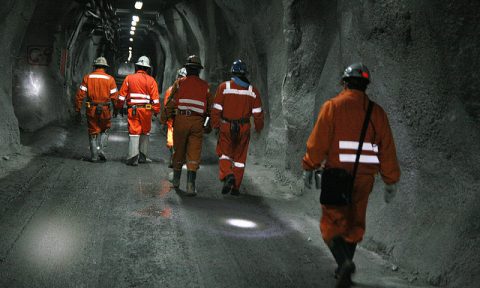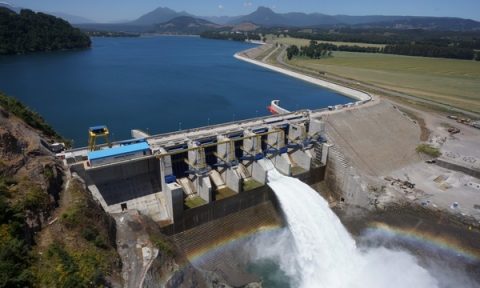Low copper prices lead to decline of U.S. $ 4,300 million in exports in 2013 and 2014
At the end of 2013, revenues will decrease by $ 1.406 million with an average price of U.S. $ 350 cents a pound
In the first five months of the year, the price of copper has dropped 8.53%, averaging a value of U.S. $ 3.46 a pound, which compares with U.S. $ 3.68 which was quoted in the same period , 2012.
According to estimates of the last Monetary Policy Report (IPoM) from Central Bank, the trend would continue for the remainder of the year and next, with projections of U.S. $ 3.50 a pound in 2013 and U.S. $ 3.40 for 2014.
These values would impact lower income from exports of the mineral (except molybdenum), subtracting a total of U.S. $ 4,322 less per shipment for this year and next, which would be a significant decline in total shipments considering that cause a 10% drop in revenue from copper shipments.
By referring to the metal price estimates of 2013 and 2014 made by the Central Bank and based on the study of the calculation of the director and Professor of the Mining Center of the Pontificia Universidad Católica de Chile, Gustavo Lagos, revenues would decrease to the end of the year at U.S. $ 1.406 million going from the $ 46.147 million were received with the average copper price in 2012 to $ 44.741 million to the decline of U.S. $ 11 cents expected fall in value versus 20013 previous year.
The effect would be intensified over the next year, when export revenues decrease by $ 2.915 million. Everything on the assumption that these projections are met production and prices, for which estimates are more pessimistic as the ones from Pablo Correa, chief economist at Santander Group, who expects the metal red-considering the dollar rally-will trade to U.S. $ 2.70 a pound in the long-term price.
In this regard, Claudio Agostini, Economist and Academic from Adolfo Ibáñez University, says that “in general, larger projects have a long-term evaluation with prices which are so high to now.”
He adds that “there are several large mining companies which are mines that have reservations for 40 or 50 who are evaluated at $ 2.5 or $ 2.7”.
The long-term price, below $ 3
At this decline in the trade balance would be added first, project stoppages are efficient only in periods of “super cycle” in which the values are very high.
On the other hand, lower capital inflows for new investment projects by the mining companies, according to Susana Jimenez, senior economist from Libertad y Desarrollo (LyD), the result of this uncertainty ” would be re-evaluating their investment projects.”
“In the current account recorded inputs (product sales), but also the outflow of capital, which is income and would be affected by a drop in the copper price,” he says.
Next to the Consultative Committee Meeting of the Copper Reference Price from which it has emerged that could be organized before July, even in mid-June, Jimenez believes that it should expect a long-term price (2013-2022) lower to $ 3 given the low it has experienced in the last few months and which compares with U.S. $ 3.06 set last year and based governing Budget 2013.
“Although the average is ten years old, weigh more the first. Last year the price exceeded U.S. $ 3.5 a pound, “he says.
Extreme risk by slower growth in China
Slower growth in China, of which Chile shows an “extreme risk” to the evolution of its economy, as an indicator of global risk consultancy Maplecroft,will determine the effect on the price together with India, who could also see reduced speed expansion.
Along with a possible decline in demand from China, whose growth could settle at around 7%, it should also be taking into account the increase in global copper supply by the start-up of new projects and increased production of current operations, says Alvaro Merino, head of research at the National Mining Society (Sonami).
Last week the President of the trade association, Alberto Salas quantified at U.S. $ 2,000 million less the contribution of mining to the Treasury by the rise in the cost of production.
Along with this, it can be taking into account the increase experienced by the dollar from April to date, period in which it has appreciated 10% to almost $ 500 case last week and that historically maintained an inverse relationship with the price of copper in the country.
“Foregoing (referring to increases in production) configures a surplus scenario for this year, the International Copper Study Group estimated to be around 400,000 tons,” he added.
In contrast to this increase in production worldwide in 2013 and 2014, it is expected that the demand-Merino says does not have the same growth rate.
Source: Diario Financiero












